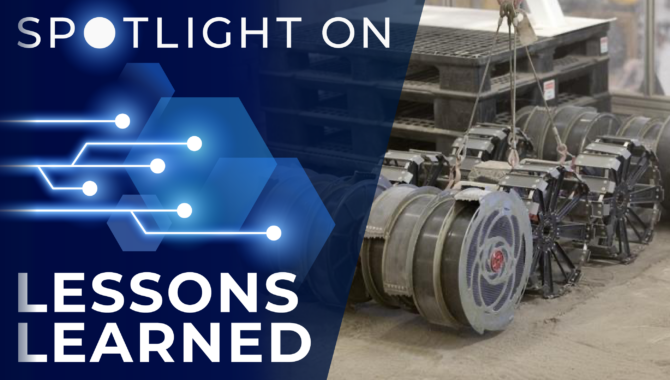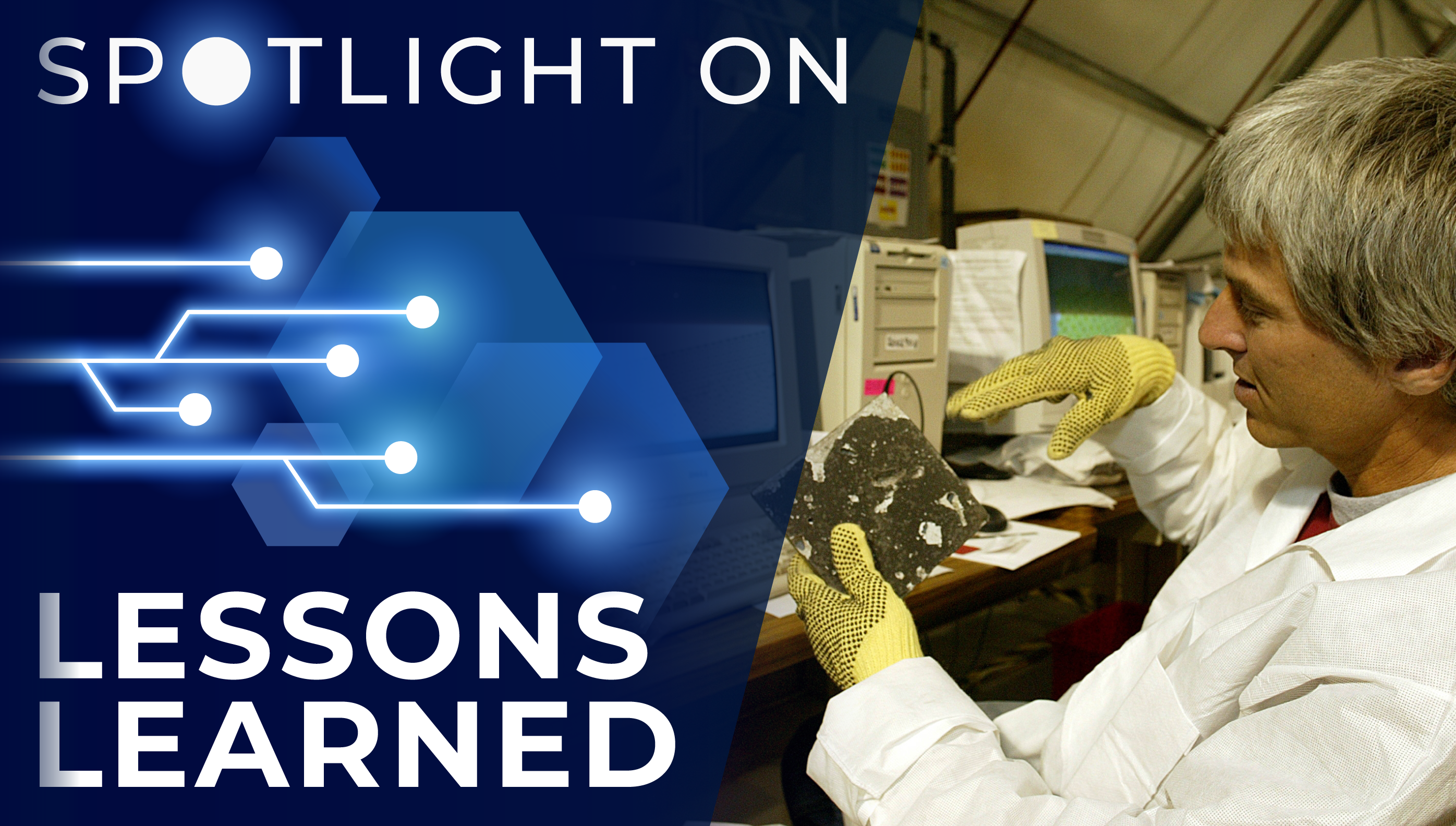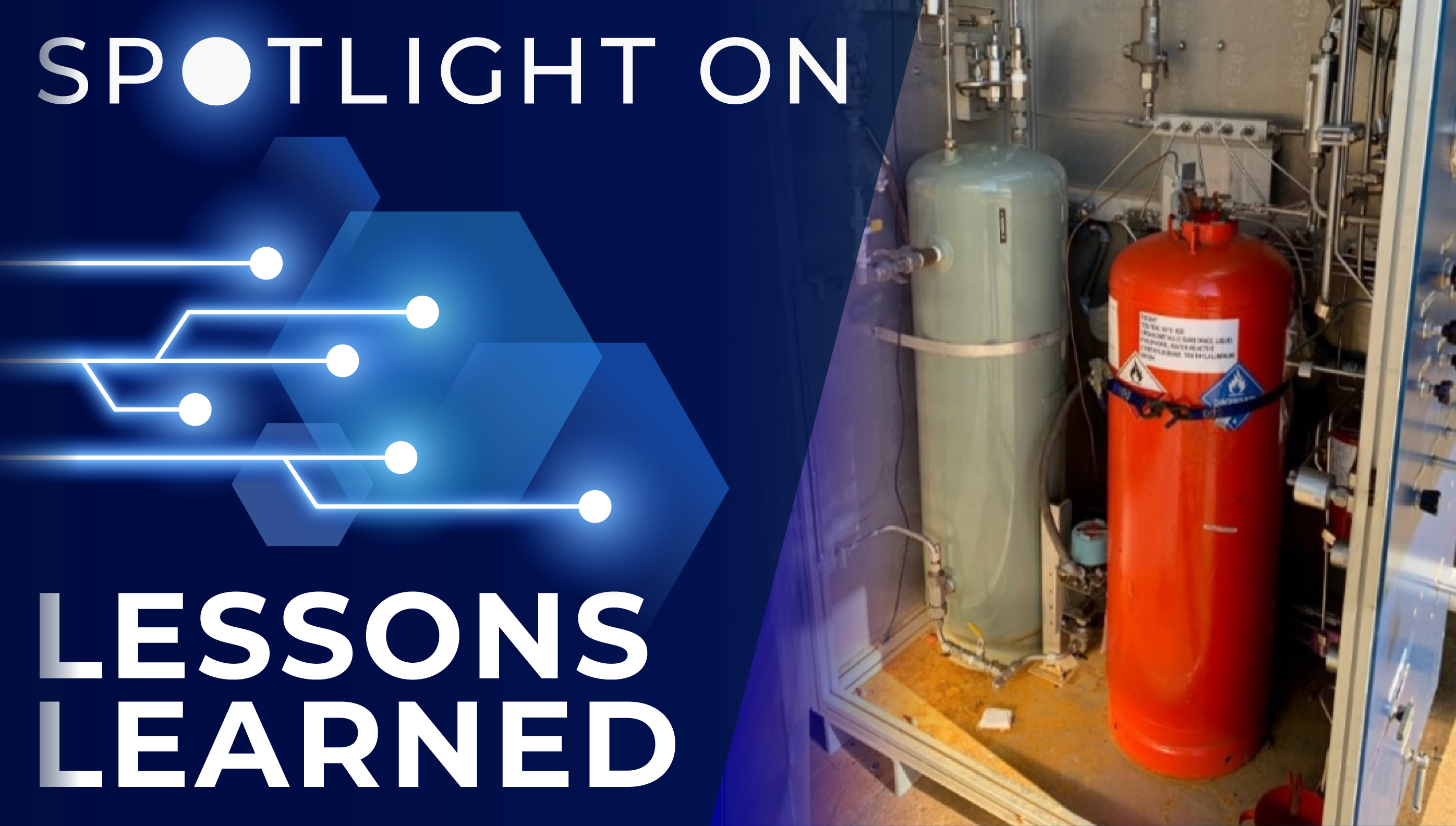
The likelihood of success increases if the group responsible for implementing design verification methods chosen early in a program’s life cycle is allowed to contribute to the selection process.
As part of the development of requirements for the Constellation Program, methods were developed to verify the requirements were met. Verification methods were assigned early in the project life cycle and, for the most part, they were determined by teams or individuals who were not part of the design or implementation team. Later, when the methods were addressed by the engineers responsible for implementing the subsystem design, those engineers preferred different methods or found the ones originally assigned to be impractical.
The Constellation team subsequently recommended involving all stakeholders, including the implementing organization, in the initial selection of the design verification method to increase the likelihood of success.
Lean development processes that focus on design verification in the early stages are at the heart of innovation at NASA’s Swamp Works at Kennedy Space Center. Celebrating 10 years of discoveries, Swamp Works uses hands-on development and rapid prototyping to create technology solutions for NASA exploration missions to the Moon and Mars.
Lesson Number: 5203
Lesson Date: January 12, 2011
Submitting Organization: Kennedy Space Center
HIGHLIGHTS
LESSONS LEARNED
- When selecting a design verification method, the group responsible for implementing the design should weigh in on the practicality of the proposed method.
- All stakeholders should have a vote in determining the verification method used.
RECOMMENDATIONS
- Include all stakeholders (customers, operations, design/implementing organization, and users) in the initial selection of the verification method.
- Throughout the design life cycle, reevaluate the methods originally selected to confirm they remain valid as the design matures.
Consult the lesson learned for complete lists.

Jason Schuler
Credit: NASA
NASA Mechanical Engineer and Swamp Works Co-founder Jason Schuler on the importance of this lesson learned:
It goes back to starting with the proposal process where you’re thinking about the end state at the beginning. If you have the stakeholders involved in that process — each looking from their own perspective — they can think about how they’re actually going to perform that verification.
Looking at systems engineers versus researchers, we each have our area of expertise, so the verification may not be obvious to one discipline. We know how challenging they’re making it by imposing some sort of requirement that is hard to verify. So, by having the people that will eventually be responsible for verifying involved at the early stages, you’re going to get a much better result.
At Swamp Works as we move up higher on the Technology Readiness Level ladder, we will have more of these kinds of verifications, so those requirements grow as we get closer to a flight version of our technologies. At that point we need to have more rigor, and the reviews of the products we’re creating are stricter, and the verifications will grow. Swamp Works has a lot of multidisciplinary people, and they’re able to see things from different angles. As researchers they wear a lot of different hats.
For construction work on Earth, inspectors verify that a structure is safe before people can use it. But how are you going to do verification of structures and things that you build on the Moon? That’s definitely something that we’re thinking about as well. We will make sure it’s safe for astronauts who go there.
At Swamp Works we like to focus on innovation. We try to push back on some of the process a little bit, so that we can move a little bit faster and iterate quickly. Fundamental for our group is failure is an option. All of the projects at our stage should be carrying technical risks. If we’re not carrying technical risks, we’re probably not pushing the envelope hard enough.
When you move closer toward flight, you want to start buying down those risks and having more confidence. You also want to make sure that you’re delivering a quality product, providing the most value, and having confidence that when you send it there it’s going to work because it’s actually flying and isn’t just a lab prototype anymore.
We have more opportunities with the Commercial Lunar Payload Services Program than we’ve ever had in the past. Soon we’ll have two to three flights a year going to the Moon with an opportunity to fly payloads and actually test technology out on the lunar surface. There may be that particular technology with one shot to get out of the TRL ‘valley of death’ and prove that it can be part of future missions. We want to have confidence that it’s going to work. Considering the design verification is key.
Related Resources
Article: Kennedy’s Swamp Works Celebrates a Decade of Discoveries
Video: Kennedy’s Swamp Works Celebrates a Decade of Discoveries
Episode 23: Swamp Works – Small Steps, Giant Leaps Podcast
Spotlight on Lessons Learned is a monthly series of articles featuring a valuable lesson along with perspective from a NASA technical expert on why the lesson is important. The full lessons are publicly available in NASA’s Lessons Learned Information System (LLIS).
If you have a favorite NASA lesson learned that belongs in the spotlight, please contact us and be sure to include the LLIS Lesson Number.









